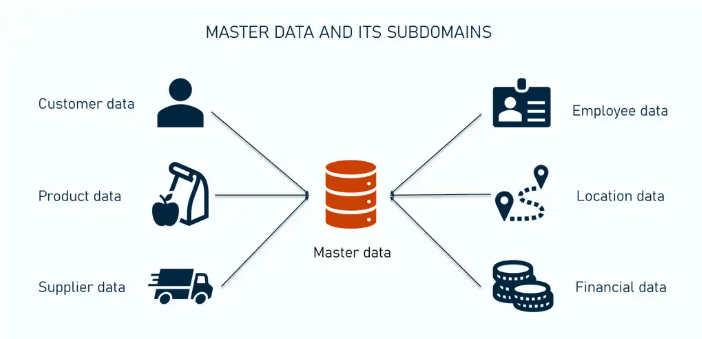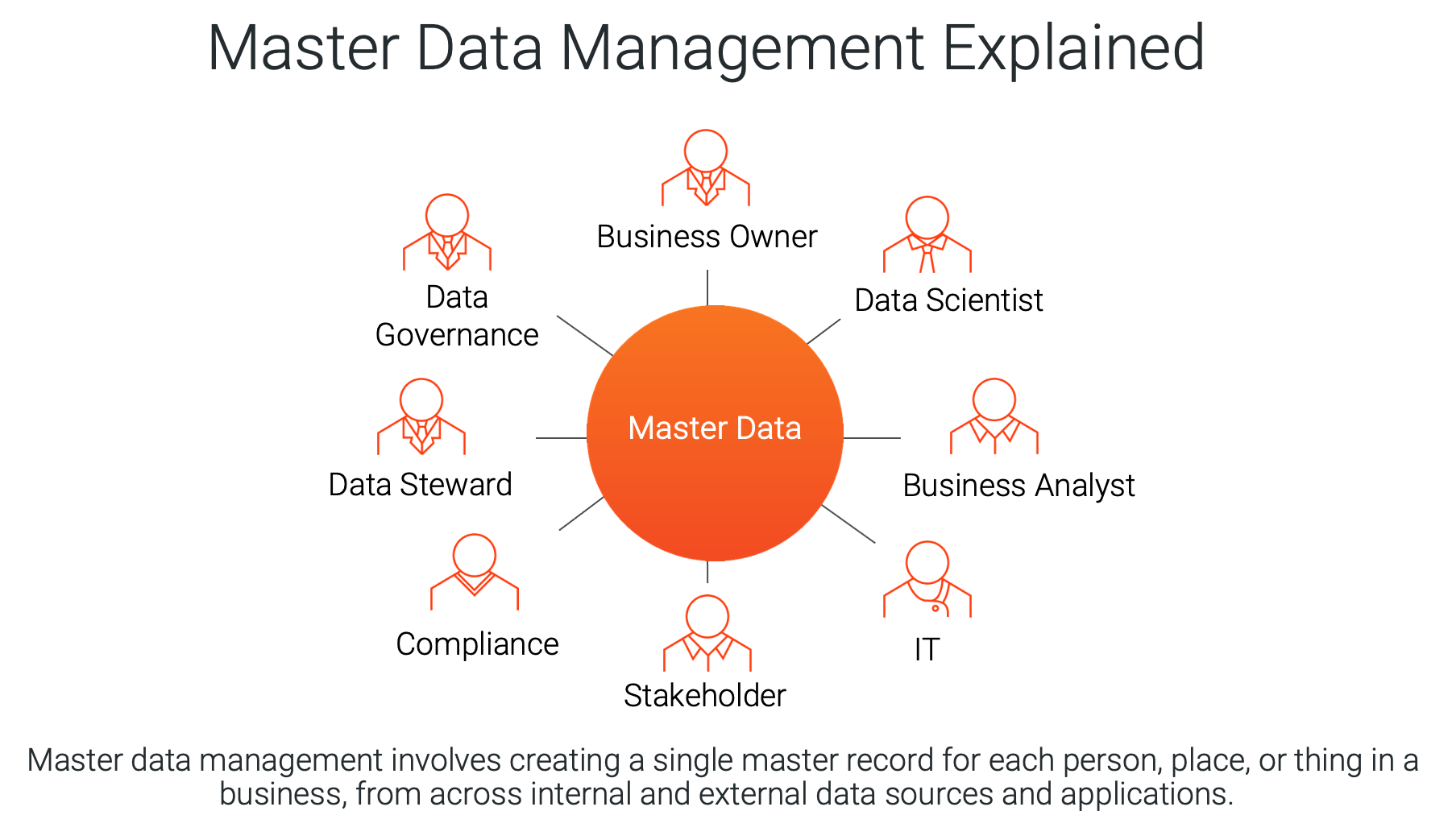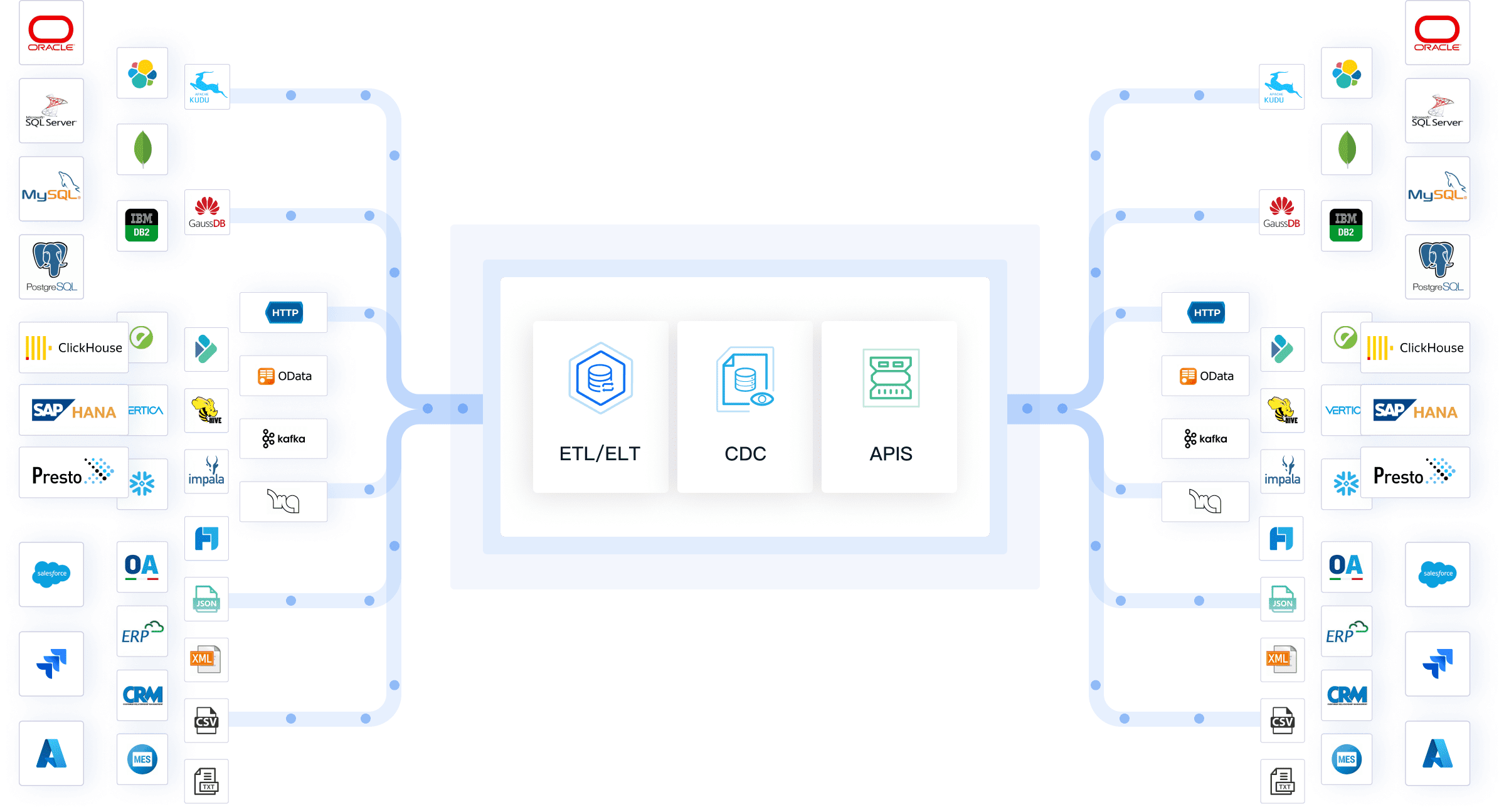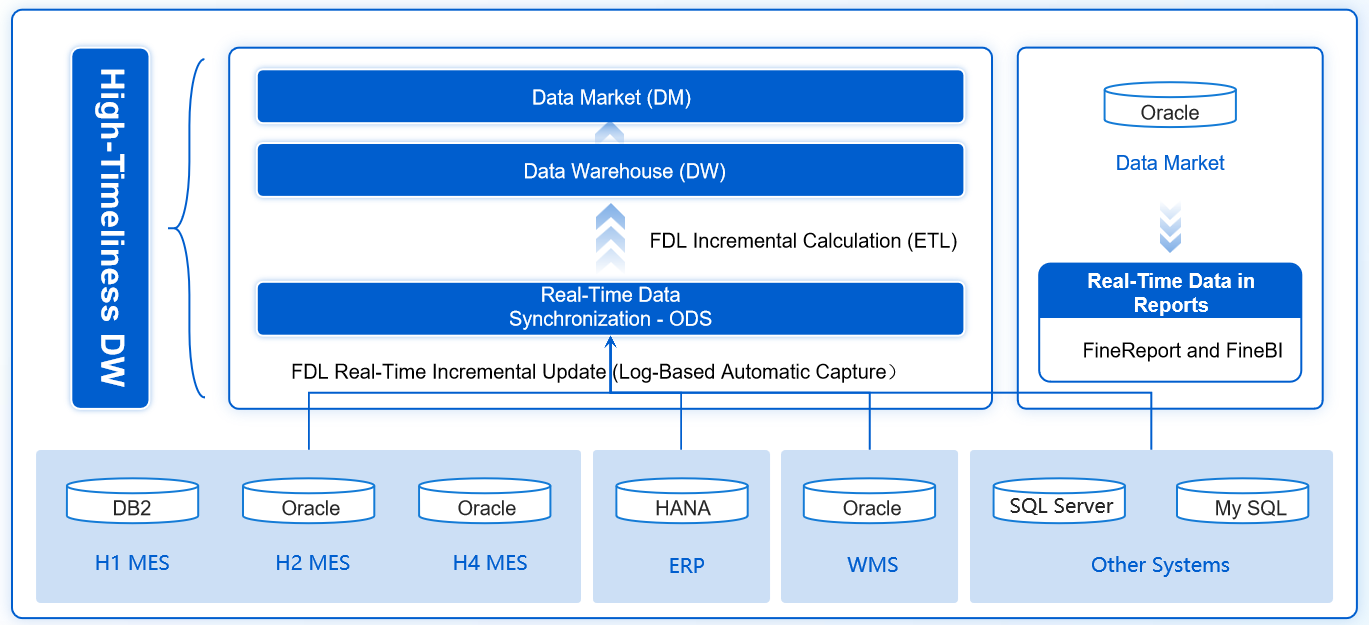Master data management helps you create a single source of truth for your organization by organizing and maintaining master data. You often face challenges with data silos and inconsistent information. Many organizations report problems:
- 40% struggle with data silos.
- 64% cite data quality as their top data integrity challenge.
Master data includes essential business information such as customer, product, and supplier records. When you manage master data well, you improve accuracy and trust in your data. You gain better control and can make informed decisions using reliable data from multiple sources.
Master Data Management

What is Master Data?
You interact with master data every day, whether you realize it or not. Master data represents the core information that drives your business operations and decision-making. This includes the essential entities that remain stable over time and form the backbone of your organization’s processes.
Master data includes information about customers, products, employees, inventory, suppliers, and sites. You can also think of master data as the “who,” “what,” and “where” of your business. For example, customer records store names and contact details, product data describes items you sell, and supplier data tracks your business partners.
Master data differs from transactional and reference data. Transactional data records business activities, such as sales or purchases, and changes frequently. Reference data provides context, like codes or categories, to help organize other data types. Master data remains stable and supports your business intelligence and operational efficiency.
| Data Type | Definition | Business Impact |
|---|---|---|
| Master Data | Core entities that are essential for operations and decision-making. | Critical for business intelligence and operational efficiency. Improves decision-making processes. |
| Transactional Data | Data that reflects specific business activities and transactions. | Dynamic and changes frequently, capturing the most recent business activities. |
| Reference Data | Data that provides context and categorization for other data types. | Affects data validation and reporting, ensuring consistency across systems. |
When you manage master data well, you create a reliable foundation for your business. You can trust your data, improve reporting, and make better decisions. Master data management helps you achieve a single source of truth, ensuring that everyone in your organization works with the same, accurate information.
Key Elements
Master data management is more than just storing information. You need a structured approach to ensure your data remains consistent, accurate, and useful. Effective master data management involves several key elements:
- Define the Hierarchies
Assign clear roles and responsibilities. Business leaders, IT teams, and data stewards must know their part in managing master data. - Think of the Big Picture
Allocate enough resources to support your master data management strategy. This helps you address challenges as your organization grows. - Establish Data Governance
Set up policies and rules for how you handle master data. Data governance ensures you meet business and regulatory requirements. - Keep Customer-Centricity in Mind
Build complete customer profiles by consolidating data from different sources. This gives you a better understanding of your customers. - Deploy the Right Master Data Management Software
Choose tools that support integration and governance. The right software helps you maintain data quality and streamline processes. - Stay Educated
Provide regular training for your team. This keeps everyone updated on best practices and regulations related to data sharing. - Monitor, Refresh, Review, Repeat
Regularly update and review your master data. This maintains accuracy and ensures your data stays relevant.
Note: Master data management systems often focus on domains like customer, product, and supplier data. Managing these domains gives you a comprehensive view of your business and supports better segmentation and reporting.
Master data management brings together technology, tools, and processes to coordinate master data across your enterprise. It delivers an organized method for creating a single, authoritative view of your critical data assets. By consolidating information from different sources and refining it, you improve data quality and accuracy. This unified approach supports your business intelligence, reporting, and operational needs.

Benefits of Master Data Management
Business Value
Master data management delivers measurable benefits for your organization. When you implement enterprise master data management, you create a single, reliable source for your most important information. This approach improves data consistency and accuracy across all departments. You can trust your data, which leads to better decision-making and more efficient operations.
You gain several advantages from master data management:
- Improved operational workflow
- Enhanced customer experience
- Increased customer satisfaction
- Incremental revenue growth
You also see direct improvements in your data quality. Master data management increases the percentage of accurate, complete, and duplicate-free data. You reduce errors and inconsistencies, which means you spend less time fixing mistakes. Integration efficiency improves as you synchronize data across systems quickly and accurately. You also meet compliance requirements more easily, which protects your business from regulatory risks.
Master data management enables you to centralize and standardize your master data. This unified approach ensures data integrity and allows you to make informed decisions. You see improvements in customer satisfaction, operational efficiency, and business impact.
Organizations that invest in enterprise master data management often report:
- 30% faster product launches due to improved data consistency
- 25% lower compliance costs through automated governance workflows
- Unified customer profiles from various touchpoints
- Personalized customer experiences and targeted marketing campaigns
You also benefit from clear data ownership, consistent data standards, and comprehensive audit trails. These factors help you maintain trust in your data and support long-term business growth.
Master data management supports both customer master data management and product master data management. With customer master data management, you create unified customer profiles and deliver proactive service. Product master data management helps you launch products faster and manage product information more effectively.
You can expect a strong return on investment from enterprise master data management. Many organizations achieve an average ROI of over 340% within three years. Some report a net present value of $13 million from modern master data management solutions.
Common Challenges
While the benefits of master data management are clear, you may face several challenges during implementation. Understanding these obstacles helps you plan more effectively.
| Challenge | Description |
|---|---|
| Data Standards | Creating a standardized data format across all divisions ensures data is easily shared. |
| Abundance of Data Storage Options | Managing many storage options can lead to isolated silos and complicate integration. |
| Selecting the Primary Data Set | Reaching consensus on which data to master can be contentious in large organizations. |
| Choosing the Right Tools | Selecting appropriate master data management tools is critical for success. |
| Integration of Data | Integrating data from various applications is time-consuming and prone to errors. |
| Data Stewardship | Establishing data stewardship maintains data integrity and supports long-term management. |
You may also encounter these issues:
- Not involving business stakeholders early can lead to misalignment with your actual needs.
- Failing to validate the most important data and business processes can worsen existing problems.
Manual processes present another major challenge. Manual data entry often leads to typos and duplicate entries. Time-consuming reviews increase the risk of errors. Without automation, data audits become difficult, and your databases may become outdated and unreliable.
"The elimination of human error — if we had a platform — would be a huge time saver. This would save us hours each week."
Many organizations still rely on legacy technology, which degrades performance. Only 36% of data quality and enrichment functions and 33% of data governance and privacy functions are fully automated. This lack of automation slows down your master data management efforts and increases operational costs.
You can overcome these challenges by adopting enterprise master data management solutions that automate data integration, cleansing, and governance. This approach helps you break down data silos, reduce manual tasks, and ensure your master data remains accurate and up to date.

Master Data Management Software

FineDataLink Overview
When you look for master data management software, you want a solution that brings all your master data together and keeps it accurate. Master data management software serves as the backbone for your data strategy. It helps you connect, organize, and govern your master data across different systems. You need software that can handle data from multiple sources, maintain consistency, and automate updates. This approach ensures your business intelligence and operations rely on trustworthy master data.
FineDataLink stands out as a modern master data management software platform. You can use it to integrate master data from various sources, ensuring you always have access to the most relevant information. FineDataLink guarantees that your master data remains consistent and reliable, which reduces errors from different datasets. The platform automates data synchronization, so your reports and dashboards always reflect the latest master data. You can also transform master data during integration, making sure it is ready for analysis and decision-making.

Key Features
You need master data management software that addresses your biggest challenges. FineDataLink offers several features that make it a strong choice for managing master data:
- Low-Code Platform
You can build and manage master data pipelines with a visual interface. This feature allows you to work efficiently, even if you do not have advanced coding skills. - Real-Time Data Synchronization
FineDataLink keeps your master data updated across all systems. Automated synchronization ensures you always work with the latest master data. - Advanced ETL/ELT Capabilities
You can extract, transform, and load master data from different sources. This process helps you prepare master data for analysis and reporting. - API Integration
FineDataLink lets you connect master data to other applications quickly. You can share and access master data across your organization with ease.
The table below shows how FineDataLink addresses common pain points in master data management software:
| Challenge | Solution |
|---|---|
| Scalability | FineDataLink handles large and growing volumes of master data efficiently. |
| Integration | The platform connects and harmonizes master data across fragmented systems. |
| Automation | Automated workflows and real-time validation improve master data quality. |
When you select master data management software, consider these key factors:
- Data governance capabilities
- Seamless data integration
- Scalability and performance
- Data quality and cleansing
- Customization and flexibility
- User-friendly interface
FineDataLink supports all these needs. It helps you enforce data governance policies, maintain high-quality master data, and ensure compliance. You gain a structured framework that keeps your master data secure, accurate, and ready for business use. With FineDataLink, you can break down data silos, automate master data processes, and scale as your organization grows.

Implementation of Master Data Management
Steps
Implementing master data management in your organization requires a clear strategy and structured approach. You start by assessing your current landscape. Identify all master data sources and evaluate their quality. Assemble a cross-functional team that includes business leaders, IT professionals, and data stewards. Define clear goals and objectives for your master data management system. Engage stakeholders early to ensure alignment and support.
Follow these essential steps for successful master data management:
- Establish data governance. Assign roles and responsibilities, create data policies, and set up conflict resolution processes.
- Conduct a master data inventory. Catalog all data sources, analyze data quality, and document gaps.
- Select and deploy the right master data management tools. Evaluate approaches, define your technology architecture, and plan deployment.
- Develop integration and quality management processes. Set data cleaning rules, create integration workflows, and monitor data quality.
- Pilot your implementation. Start with one master data domain, test, and adjust as needed.
- Train stakeholders. Offer comprehensive training and highlight the benefits of master data management.
- Roll out and scale. Expand gradually, monitor adoption, and prepare to scale.
- Monitor and optimize. Set key performance indicators, run audits, and adapt to business needs.
- Sustain long-term governance. Integrate master data management into daily workflows.
Critical roles in master data management include data governance, data stewardship, data quality management, and data access management. The table below outlines these responsibilities:
| Role | Description |
|---|---|
| Data Governance | Establishes policies and procedures for data management, ensuring consistency and a data-driven culture. |
| Data Stewardship | Implements data governance guidelines and ensures adherence to organizational policies and regulations. |
| Data Quality Management | Establishes frameworks for data cleansing and requires collaboration between IT and business. |
| Data Access Management | Controls and monitors access to data to prevent misconduct and enhance compliance and risk management. |
FineDataLink streamlines master data management by supporting multiple data sources, enabling real-time synchronization, and providing ETL functionalities. You benefit from seamless integration and a user-friendly interface, which simplifies deployment and API development.

Best Practices
You achieve effective master data management by following proven best practices. Educate stakeholders to ensure everyone understands data management policies. Set up data validation and cleaning processes to maintain high data quality. Focus on specific master data areas one at a time. Implement automation to improve efficiency and reduce manual work. Leverage analytics and agile methodologies to enhance flexibility. Understand your data protection responsibilities, especially with regulations like GDPR.
Common pitfalls include failing to connect master data management to business objectives, relying only on technology, and not collecting key performance indicators. Avoid these mistakes by aligning your strategy with business goals and monitoring progress regularly.
Tip: Use AI-assisted data imports and automation tools like FineDataLink to improve data quality and streamline your master data management processes.

Master data management gives you a single, consistent view of your critical business data, which supports informed decisions and operational efficiency. The table below highlights why master data management is essential for long-term success:
| Benefit | Explanation |
|---|---|
| Establishes a single source of truth | Reduces conflicts from siloed systems |
| Ensures high data quality | Enables accurate reporting and analytics |
| Improves operational efficiency | Centralizes and automates data management |
To start or improve your master data management initiatives, you should:
- Adopt a business-driven approach.
- Identify key data domains.
- Educate your organization on data quality.
- Choose scalable, integrated solutions like FineDataLink.
Evaluate your current practices and take action to unlock the full value of your data.

Continue Reading About Master Data Management
Enterprise Data Integration: A Comprehensive Guide
What is enterprise data and why does it matter for organizations
Understanding Enterprise Data Centers in 2025
Enterprise Data Analytics Explained for Modern Businesses
FAQ

The Author
Howard
Engineer Data Management & Ahli Data Research Di FanRuan
Related Articles

What is a data management platform in 2025
A data management platform in 2025 centralizes, organizes, and activates business data, enabling smarter decisions and real-time insights across industries.
Howard
Dec 22, 2025

Top 10 Database Management Tools for 2025
See the top 10 database management tools for 2025, comparing features, security, and scalability to help you choose the right solution for your business.
Howard
Dec 17, 2025

Best Data Lake Vendors For Enterprise Needs
Compare top data lake vendors for enterprise needs. See which platforms offer the best scalability, integration, and security for your business.
Howard
Dec 07, 2025



